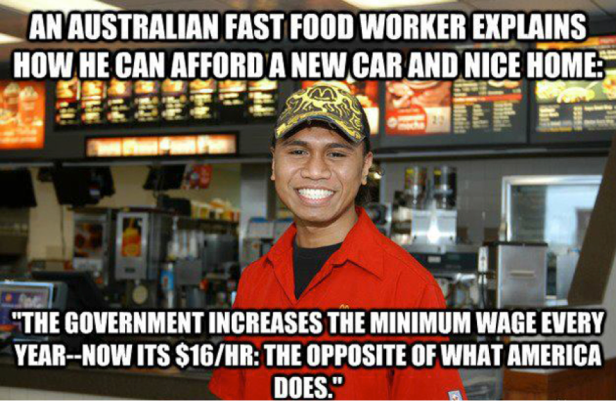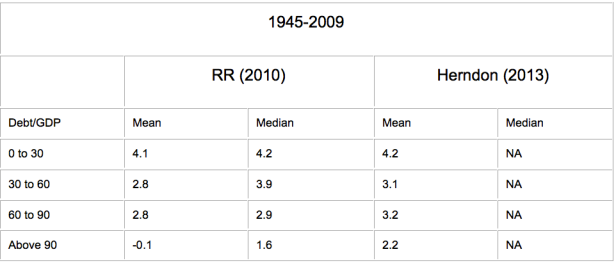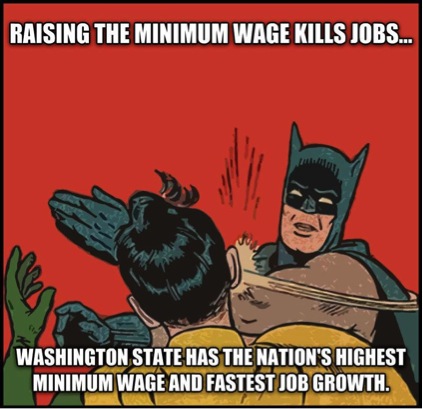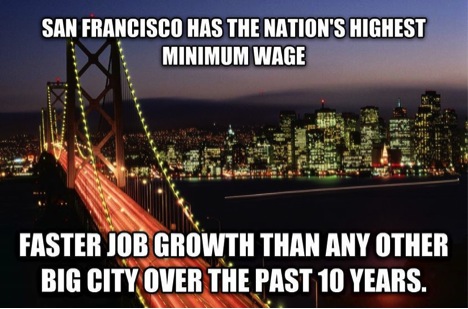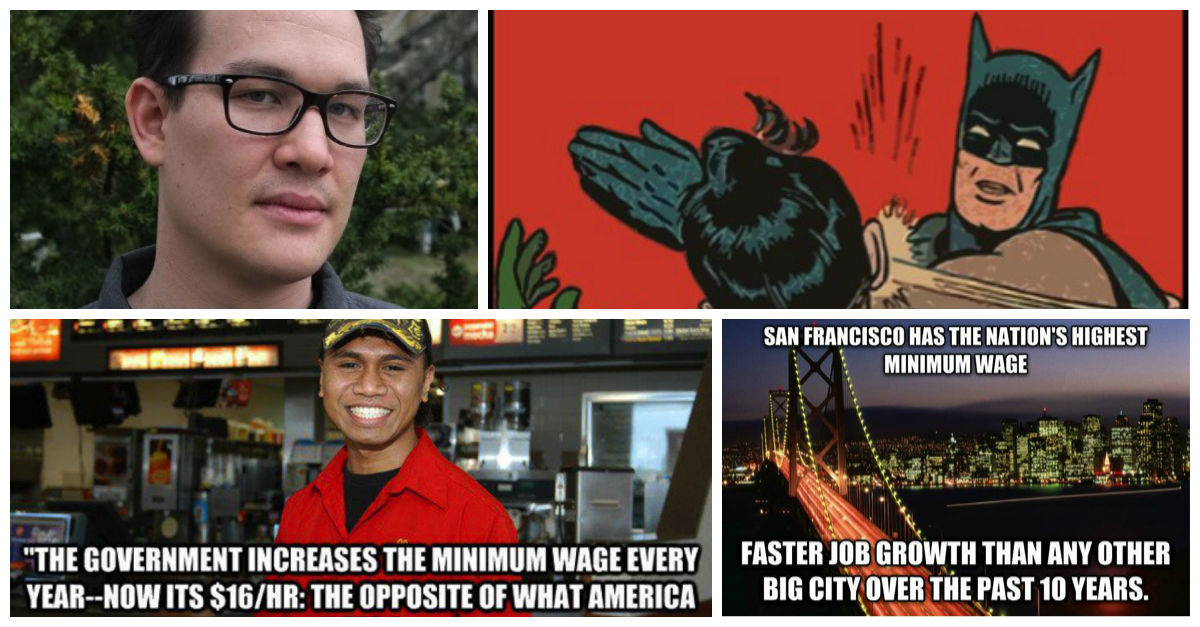Back in April, I penned a column attacking the popular “Opposite of America” meme, which is created by US Uncut, an anti-circumcision austerity group known for making viral but deceptive content. After my own piece circulated the web, US Uncut promised to “write a formal response shortly,” which really meant that they would wait until everyone forgot about the piece and then say nothing.
Videos by Rare
There were only so many memes I could debunk in one column, so here we go again. Maybe they’ll respond this time.
Australia’s minimum wage is a graduated system by age, as opposed to a single minimum wage applied to all workers as is the case in the U.S. The minimum wage by age is as follows:
Under age 16: $5.87
16 Years Old: $7.55
18 Years old: $10.90
19 Years old: $13.17
20 Years of age or greater: $15.59
There numbers are calculated by converting Australian dollars into American dollars. However, exchange rates don’t give an apples to apples comparison. The cost of living in Australia is drastically higher, and thus the Australian minimum wage isn’t as appears. After recalculating the Australian minimum wage by purchasing power parity, that $16 an hour is the equivalent of $9.77. In other words, an American worker who earns $9.77 an hour can afford the same amount of goods as an Australian earning $16 an hour.
Speaking of purchasing power: how does the U.S. minimum wage stack up? While Business Insider reports that the U.S. has a lower minimum wage than nearly every single OECD nation – only nine countries on the entire planet have a higher minimum wage than the U.S. when you adjust for purchasing power.
If you want a new car and a nice home on minimum wage, you’re better off in America than in Australia. The median house in America costs $155,000, compared to $598,044 in Australia. With those figures, purchasing an American home on minimum wage would require 21,379 hours of labor, while purchasing an Australian home on the Australian minimum wage would require 37,377 hours of work. Likewise, new car prices in the U.S. are about half of what they are in Australia.
The study being referenced is a famous study by economists Carmen Reinhardt and Kenneth Rogoff titled “Growth in a Time of Debt.” The study explores the negative effect of debt on an economies long term growth, and concludes that after debt exceeds 90% of GDP, economies on average will actually show negative growth of 0.1%.
The student from the meme is Thomas Herndon, a graduate student at the University of Massachusetts, known for showing numerous flaws in the Reinhart/Rogoff methodology. He exposed quite well how the Reinhart/Rogoff study was filled with gaping errors – such as excluding certain countries from their calculations, missing data for certain countries that had high debt and high growth, and even coding errors made in excel.
Herndon made headlines as the student who “Shook the Global Austerity Movement,” but apparently none of these people read Herndon’s findings. Even after Herndon corrected the errors in The Reinhart/Rogoff study, there was still an inverse correlation between debt and growth. The only different is that the strength of the relationship isn’t as strong as previously believed. The Reinhart/Rogoff findings, compared to Herndon’s are charted below:
As you can see, average economic growth still contracts as a nation’s debt to GDP ratio increases. Debt is still bad – just slightly less bad than we thought.
This just goes to show how little US Uncut understands of the positions it’s attacking. The minimum wage specifically kills the employment prospects of the young and unskilled. A fraction of workers even earn the minimum wage (around 3-5%), so the overwhelming majority of workers wouldn’t be affected by a hike, since they already earn above the minimum.
And in fact, we do see that states with higher minimum wages have higher youth unemployment. If we look only at teenagers (age 16-19), the unemployment rate among them is nearly four percentage points higher in states which set their minimum wages above the Federal minimum of $7.25, as opposed to those that stay at $7.25.
But back to this meme. To start off, Washington State has an unemployment rate of 6.1% (close to the national average), while North Dakota has an unemployment rate of 2.6% (the lowest in the nation. Twenty eight States have unemployment rates lower than Washington State. As for the meme’s specific claim that Washington’s employment is growing at the fastest pace in the nation, Moody’s analytics doesn’t even put Washington State in the top 10 States for job growth in 2014.
Also keep in mind that the cost of living in Washington State is 117% of the national average, so when you do the math, Washington’s minimum wage of $9.32 is the equivalent of $7.96 ([100/117]x9.32), which is barely higher than the Federal minimum wage.
Apparently US Uncut suffers from short term memory loss, as this was posted literally a day after the Washington State meme. Who knew that two places could simultaneously have the nation’s highest minimum wage!
The cost of living in San Francisco is 161.3% of the national average, so their minimum wage of $10.74 an hour has the purchasing power of $6.66. I suppose the devil is in the details in this case, as this is actually below the Federal minimum wage. Unemployment in San Francisco is 4.8% (below the national average), but since the minimum wage is actually relatively low in terms of purchasing power, this makes a stronger case for lowering or abolishing the Federal minimum wage rather than increasing it.
That aside, San Francisco’s job growth really is impressive, but it’s because of the expanding technological sector, a sector which accounted for 30% of employment growth since 2010, and a sector hardly known for having employees toiling around for minimum wage.
A formal reply to this column is expected from US Uncut sometime before the next century.

